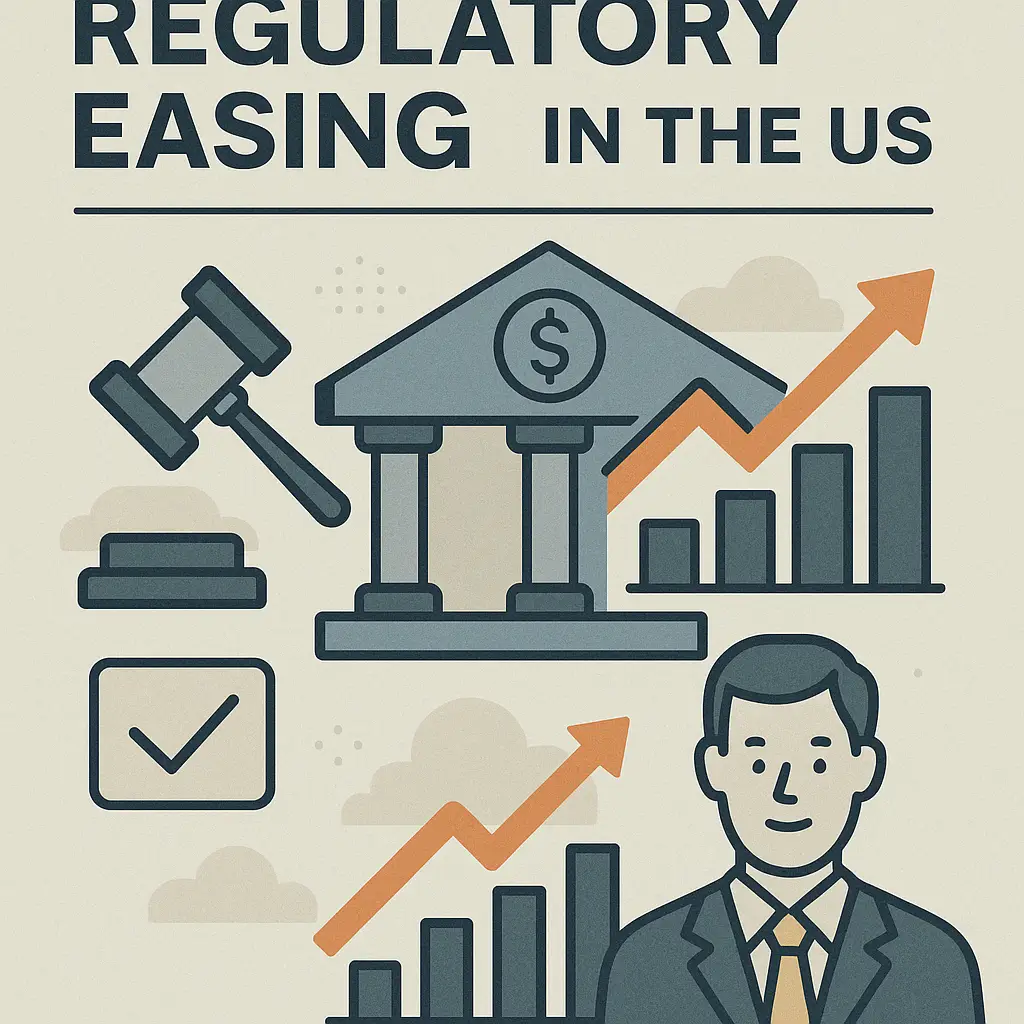🏛️ Regulatory Easing in the U.S.: A Shift Toward Streamlined Oversight
Abstract
In 2025, the United States is experiencing a wave of regulatory easing, aimed at reducing the compliance burden on small and mid-sized banks—particularly community banks. This shift is rooted in a broader economic philosophy that prioritizes lending, innovation, and regional economic growth, while acknowledging the need for post-crisis safeguards.
Context and Background
After the 2008 financial crisis, the U.S. adopted rigorous financial regulations—most notably the Dodd-Frank Act—to curb systemic risk. While effective in enhancing stability, these measures often imposed disproportionate compliance costs on smaller banks that were never a systemic threat.
As of 2025, policymakers—under a deregulatory agenda—are revisiting these frameworks to:
- Encourage credit expansion in rural and underserved areas.
- Improve competitiveness for community banks relative to large institutions.
- Enhance efficiency in regulatory oversight without sacrificing financial soundness.
Key Changes Under Discussion
- Raising the asset threshold for banks classified as systemically important, reducing regulatory reporting requirements for smaller banks.
- Reducing frequency of stress testing for banks below a certain asset size.
- Allowing more flexibility in capital buffer requirements.
- Streamlining supervision to reduce bureaucratic delays in loan processing and expansion activities.
Impacts on Community Banks
- Lower compliance costs free up resources for innovation and lending.
- Faster loan approvals support small businesses and local economies.
- Increased M&A activity among regional banks due to relaxed thresholds.
However, critics caution that excessive deregulation may reintroduce risk into the system, particularly if oversight becomes too lenient or fragmented.
Strategic Considerations
The easing of regulations is expected to reshape the U.S. banking landscape, making community and regional banks more competitive. At the same time, policymakers must balance efficiency with resilience, ensuring that financial institutions remain well-capitalized and transparent.

